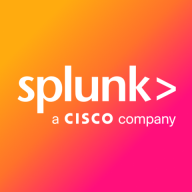

Splunk Enterprise Security and Coralogix are both influential contenders in the log management and security information management domains. Splunk, with its extensive integration capabilities and advanced threat detection features, provides an advantage for large enterprises seeking comprehensive monitoring solutions. Alternatively, Coralogix, while offering fewer features, appeals to cost-conscious businesses with its user-friendly deployment and efficient log management features.
Features: Splunk Enterprise Security is characterized by advanced threat detection capabilities, risk-based alerting, and customizable dashboards, integrating with a wide range of threat intelligence sources and application add-ons for extensive monitoring needs. In contrast, Coralogix emphasizes simple deployment and robust log analysis, featuring database-like querying and intuitive interfaces that cater to swift implementation and efficient log management for smaller enterprises.
Room for Improvement: Splunk presents challenges related to its complexity, substantial resource requirements, and a steep learning curve, which could benefit from more competitive pricing models and enhanced AI functionalities. Coralogix would benefit from developing its AI anomaly detection, improving Terraform support, and refining its user interface to be more intuitive and cost-efficient for users managing data volume-based pricing.
Ease of Deployment and Customer Service: Splunk offers flexibility in deployment across on-premises, hybrid, and cloud environments but necessitates significant expertise and time, with generally positive but sometimes delayed customer support. Coralogix, primarily cloud-based, boasts straightforward deployment, particularly on AWS, coupled with responsive customer support, though it requires improvements in documentation and localized assistance.
Pricing and ROI: Splunk's pricing structure, dependent on data ingestion, often results in high costs for smaller organizations, with a positive ROI justified by its extensive feature set. Coralogix offers a more budget-friendly and transparent pricing model, making it attractive for small to mid-sized businesses seeking effective cost management despite having fewer features than Splunk.
| Product | Market Share (%) |
|---|---|
| Splunk Enterprise Security | 7.4% |
| Coralogix | 0.7% |
| Other | 91.9% |

| Company Size | Count |
|---|---|
| Small Business | 8 |
| Midsize Enterprise | 2 |
| Large Enterprise | 5 |
| Company Size | Count |
|---|---|
| Small Business | 109 |
| Midsize Enterprise | 50 |
| Large Enterprise | 263 |
Coralogix is a stateful streaming data platform that provides real-time insights and long-term trend analysis with no reliance on storage or indexing, solving the monitoring challenges of data growth in large-scale systems.
Ingest log, metric, and security data from any source for a single, centralized platform to monitor and alert on your applications. As data is ingested, Coralogix instantly narrows millions of events down to common patterns for deeper insights and faster troubleshooting. Proactive data storage optimization enables up to 70% savings on monitoring costs with better performance.
Splunk Enterprise Security delivers powerful log management, rapid searches, and intuitive dashboards, enhancing real-time analytics and security measures. Its advanced machine learning and wide system compatibility streamline threat detection and incident response across diverse IT environments.
Splunk Enterprise Security stands out in security operations with robust features like comprehensive threat intelligence and seamless data integration. Its real-time analytics and customizable queries enable proactive threat analysis and efficient incident response. Integration with multiple third-party feeds allows detailed threat correlation and streamlined data visualization. Users find the intuitive UI and broad compatibility support efficient threat detection while reducing false positives. Despite its strengths, areas such as visualization capabilities and integration processes with cloud environments need enhancement. Users face a high learning curve, and improvements in automation, AI, documentation, and training are desired to maximize its potential.
What Are the Key Features of Splunk Enterprise Security?In specific industries like finance and healthcare, Splunk Enterprise Security is instrumental for log aggregation, SIEM functionalities, and compliance monitoring. Companies leverage its capabilities for proactive threat analysis and response, ensuring comprehensive security monitoring and integration with various tools for heightened operational intelligence.
We monitor all Security Information and Event Management (SIEM) reviews to prevent fraudulent reviews and keep review quality high. We do not post reviews by company employees or direct competitors. We validate each review for authenticity via cross-reference with LinkedIn, and personal follow-up with the reviewer when necessary.